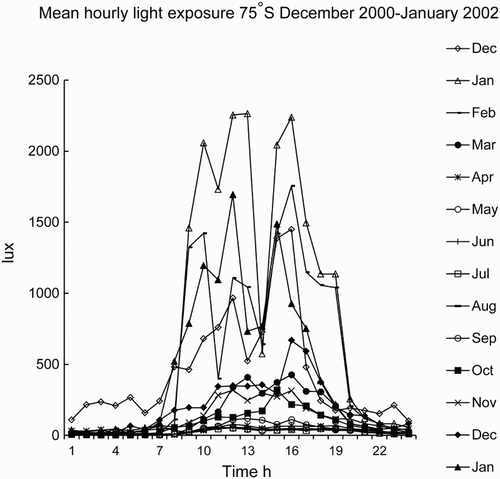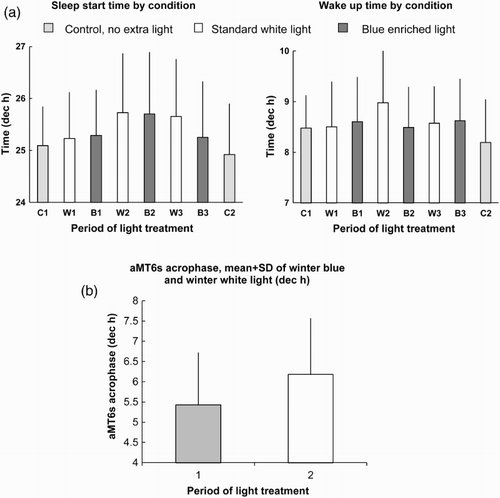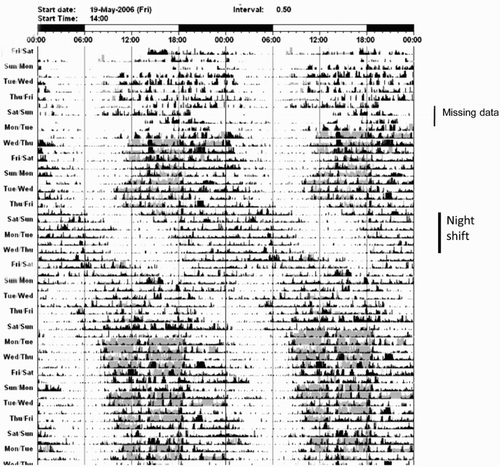Figures & data
FIGURE 1. Personal light exposure measured at 2-min intervals by ActiwatchL at Halley base, 75°S. Average number of subjects per time point = 7 ± 1 (SD). Data collected by Dr. Thomas Rieley, base doctor (Halley, Rieley, & Arendt, unpublished). Note low values for December 2001, due to no relief ship, and, thus, less outdoor work.

FIGURE 2. Sleep (black bars) at Halley base (75°S) of a representative subject showing synchronization of sleep (diaries): artificial wake-up for most week days with scheduled work and rest, but substantial phase delay on weekends in winter—May to September (O'Conor, Citation1989; redrawn from Arendt, Citation1995). Note three periods of night shift during the year.

FIGURE 3. (a) Sleep timing in alternating 4–5-wk periods of standard white and blue-enriched lights at 75°S, 2006, with 3-wk controls (no extra light), before and after extra light, beginning in March and ending in October. The sun is below the horizon from May 2 to August 10. There were no significant differences in wake-up time between light conditions. Sleep start time was 19 min earlier in blue-enriched light than standard white light (p < .05). (Redrawn from data described in Mottram et al., Citation2010.) (b) Circadian phase assessed with the aMT6s rhythm in urine during the mid-winter periods B1, B2 (blue-enriched light, 1) and W2, W3 (standard white light, 2) as in part a. During sundown, the aMT6s acrophase was earlier in B1 and B2 than in W2 and W3 (paired t test of average individual values p < .03, n = 8). (Unpublished diagram from data described in Mottram et al., Citation2010.)

FIGURE 4. Rate of adaptation to night shift (20:00–08:00 h) in individual subjects at 75°S in relation to their average Horne-Östberg (diurnal preference) score. The rate was derived by subtracting the average acrophase of aMT6s for the 3 d preceding the night shift from the acrophase on d 5 of the night shift. The greater the evening preference, the faster the rate of shift (p < .05). (Unpublished diagram from data described in Ng et al., Citation2003.)

FIGURE 5. Activity and light exposure (ActiwatchL) recorded at 30-s intervals at 75°S from May 19, 2006, to illustrate winter free-running following a period of night-shift work. Black is activity and gray is light exposure. (Unpublished diagram from data described in Mottram et al., Citation2010.)
